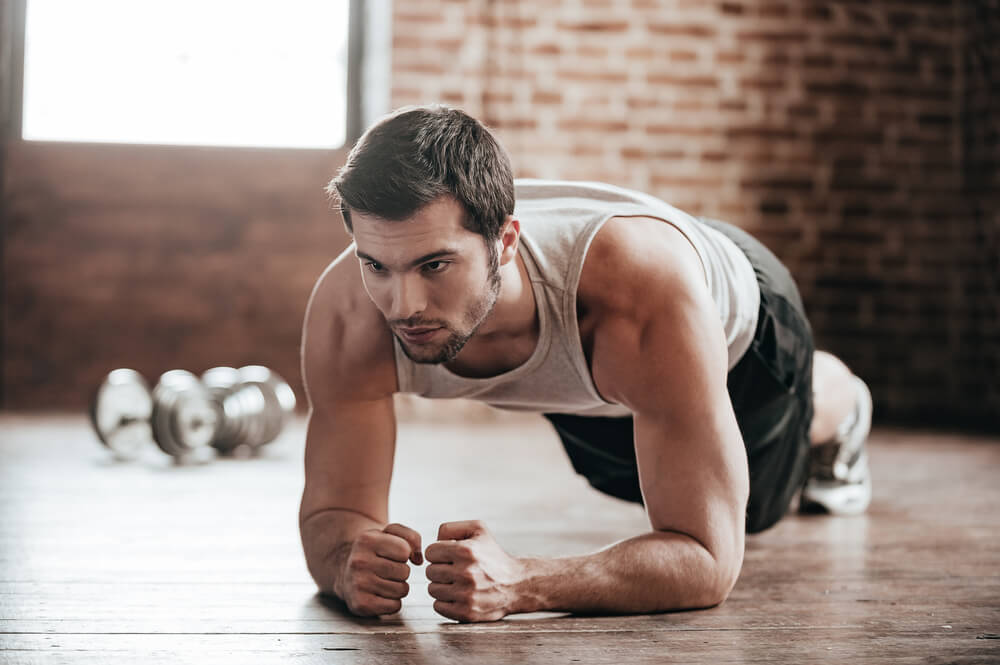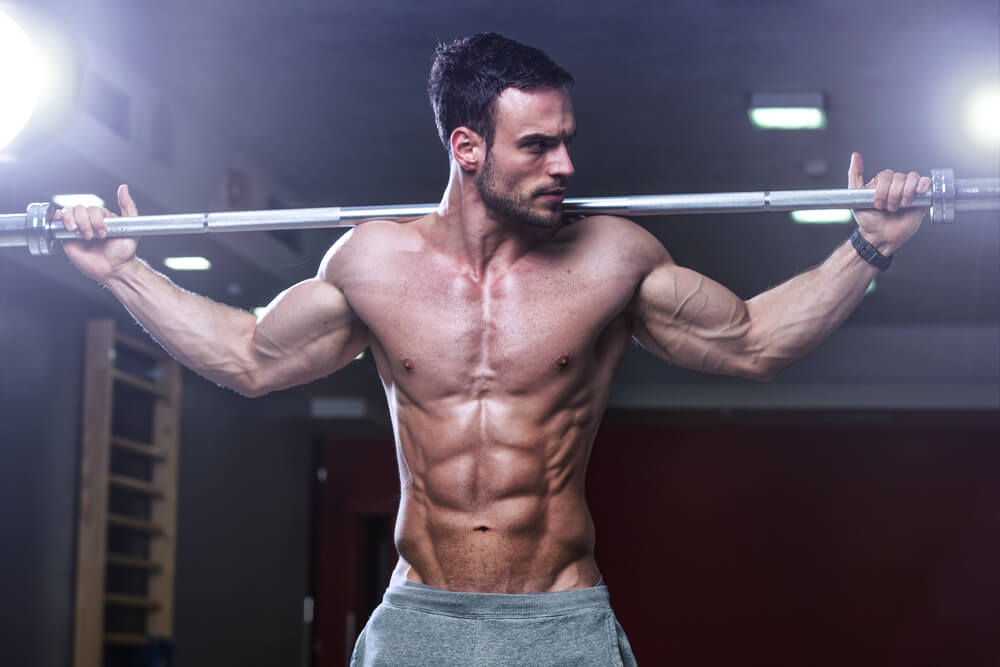
You can walk into any gym and see various people with weight belts around their waist. Some people are using belts while lifting really lightweight. Some others are squatting 300+ pounds and are wearing weight belts, knee sleeves, knee wraps etc.
So what are weight belts for?
Are they used for a back brace, as some are lead to believe?
How do they help you lift more?
What kind of belt should you buy?
This article is not an endorsement for any specific type of belt, but as a guide to helping you select you belt and how you should use it. Over.
Weight Belts: What Are They Really Used For?
Weight belts are some of the most important pieces of equipment for any serious bodybuilder, powerlifter, Olympic lifter or just as a serious Gym Junkie.
For the past decade, the use of the belt has dwindled due to “experts” claiming that they do more harm than good. That your gains go away when you use a weight belt. These claims are further from the truth.
So what are they for?
Weight belts are used to help you or queue you when you breathe and need to brace prior to a lift. Contrary to popular belief, it is NOT a back brace.
In fact that kind of myth causes a lot of unnecessary injuries. I will go over breathing a bracing prior to a lift and how a belt can help queue those techniques. I will also go over some common mistakes.

Breathing
If you watch enough videos of Olympic or powerlifting athletes prepare for their set, you see them take these deep breaths before they commit to the lift. They take one final breath and execute their lift.
A common mistake, when it comes to breathing, is when you take a deep breath, you breathe into your chest. In reality, you should breathe into your stomach.
The reason for that is so when you take that deep breath it forces your organs to move over so you can stabilize your spine when you brace. I will get into bracing in a minute.
Now let’s add the belt to the equation. When you take that deep breath into your stomach, you push your stomach out into the belt. That push will help prepare for bracing.
I know it doesn’t “look good” when your stomach is pushed out. In the world of self-image and having that “perfect body”, breathing into your stomach isn’t an ideal look but it’s about doing your lifts safely rather than sloppy.
How should your stomach look when you take that deep breath?
It should look like a basketball.
When taking your deep breath, think of breathing into the bottom of your stomach to the top then all around your body. The belt will help guide you to make sure you are fully inflated.
Bracing
Bracing is a key building block in the foundation of strength. It is one of the most important aspect of lifting and is an easy concept but usually takes a fair amount of work and practice to master.
Some of the biggest mistakes lifters make when it comes to bracing are taking a deep breath into the lungs right before the lift. That is the most common mistake.
It makes it very hard to get to your maximum amount of intra-abdominal pressure (IAP) because your lungs are full of air.
Even if you try to push your midsection out, you will find there is not much IAP generated.
Wearing the weight belt very tight is another mistake people make. This does not allow for expansion of the midsection.
So how do wear a weight belt?
Here is a guide, you should be able to fit four fingers between the belt and your midsection. The next step is you should try to brace, if you can’t pull your fingers out then you are good.
If you can pull them out then tighten the belt. You can do this test with a partner also. Have your partner put four fingers between your midsection and the belt and repeat the bracing test.
Sucking in the abs is another big mistake. This takes all the stability away from your core and is very unsafe. There are some that expand their midsection really well but instead of pushing out to brace, they tighten their abs.
Arching your lower back too much is another mistake. This is where the misconceptions of the belt as a back brace. You will hurt yourself badly if you do this.
You think, well some lifters arc their back when they bench press. That’s a different subject altogether. Read my article The Big 3 to get more information on why do powerlifters arc their back when they bench press.
So breathing and bracing are a key part of lifting and you see how a weight belt can help you with both of those concepts.
I am hoping you are starting to realize that a weight belt is NOT a back brace but as another tool to help you lift.

Weight Belts: What Kind Should I Get?
Ok so some of you are now confused and wonder what kind of weight belt should I get?
Or you didn’t realize there are different kinds of weight belts. There are powerlifting belts and weight lifting belts. There are leather belts, Velcro belts and suede belts.
Here is the thing, depending on what you like to work on the most, is the type of belt you should get.
For a powerlifter, like myself, I go for a powerlifting belt.
So a powerlifters belt is 4 inches in width all around the belt. A weight lifting belt has the 4 inches in width more in the back than the front.
Picking out your new belt is like picking out a pair of running shoes. You should check to see how it feels on you. Some people like a powerlifters belt for all their lifts. I agree with that.
It is consistent all around and I find that I am able to breathe and brace better with a 4-inch width belt. There are different width belt for different body types. Shop around; see what works for you and your budget.

Will Weight Belts Help or Hurt My Gains?
I want you to go and research for yourself about weight belts. Look up scientific journals and not some “bro-science” website and check out how they benefited lifters.
Below is an excerpt from Jim Stoppani Ph.D. :
“I decided to do such a study myself back when I was running the Weider Research Group. We had 12 trained lifters who had been consistently doing squats for at least 5 years performing a one-rep max squat with and without a belt on two separate occasions in the lab.
The belt they wore was a powerlifting-style belt that was 4-inches all the way around. We found that the belt allowed these lifters to squat an average of 10 pounds more than when they weren’t wearing the belt.
Other studies have reported that the speed of the reps performed on the squat was about 10 percent faster when subjects wore belts versus when they didn’t. This was especially true during the later reps of a set. This suggests that lifting belts may help increase muscle power and help better maintain that power throughout a set.
Some research has also shown that wearing a lifting belt during squats increases the muscle activity of the quadriceps and hamstrings muscles. Having greater muscle activity during an exercise can help to better promote muscle growth in the long run.”
Here is another study and an excerpt from Christopher C. Frankel and Len Kravitz, Ph.D. :
“The effect of increased IAP during lifting has been theorized to aid in supporting the spine during lifting. An increase in IAP is assumed to provide a mechanism of anterior support for the spine during lifting, decreasing the load to the spine and protecting the vertebrae, discs, and articulating muscles.
However, even when rigid weightlifting belts were studied, as opposed to softer belts used in industrial settings, some studies demonstrate increases in IAP by as much as15% to 40%, whereas other investigators have shown no consistent effect on IAP.”
Here is one last study from Department of Orthopaedic Surgery, Gifu University, School of Medicine, Japan (1999):
“Wearing abdominal belts raises the intra-muscular pressure of the erector spinal muscles and appears to stiffen the trunk. Assuming that increased intra-muscular pressure of the erector spinae muscles stabilizes the lumbar spine, wearing abdominal belts may contribute to the stabilization during lifting exertions.”
These are three studies that were done by reputable individuals and organizations. So research for yourselves, try out different kinds of belts and see what is comfortable for you.
Conclusion
We went over several concepts as to why weight belts are important and how to use one. It is not a fashion statement to wear around the gym. There is a method of using a weight belt and once again it is NOT a back brace. Use it properly and pick a good one out for yourself.
In the end, you are investing in yourself. If you have any other questions, feel free to comment below.
-Detective Ayman Kafel
Latest posts by Terry M (see all)
- Garage Gyms - Aug 1, 2018
- Kettlebells – Why They Should Be Added To Your Routine. - Jul 24, 2018
- Weight Belts: What Are They Really For? - May 31, 2018










[…] via- https://gymjunkies.com/weight-belts/ […]
I feel it is interesting, I hope you continue to have good posts like this to share.
Thanks for the helpful information you shared.
I would be happy if you could help us. I hope my site will be Google accepted and put it ahead so that I can grow and hope that it will come to me.
Thank you for showing me the uses of this belt. I cannot imagine how useful it is until I read your article.
Weight belts are really an important part of gym life. That gives me the advantage to lift more weight compared to others also it helps to straighten the back too.
I really wanted to send a small word to say thanks to you for the fantastic points you are writing on this site.
Thank you for posting such a great article! I found your site perfect for my needs. It contains interesting and useful posts to me. Please continue to uphold. Thank you for this great article.
This post really made me think. thanks a lot, I didn’t know that. Thanks for posting.
Thanks for sharing this post, this is really very nice informative post.
the post is really good. thanks for posting.
How to choose a tablet
When you cease to dream you cease to live.
reely cool
awesome website